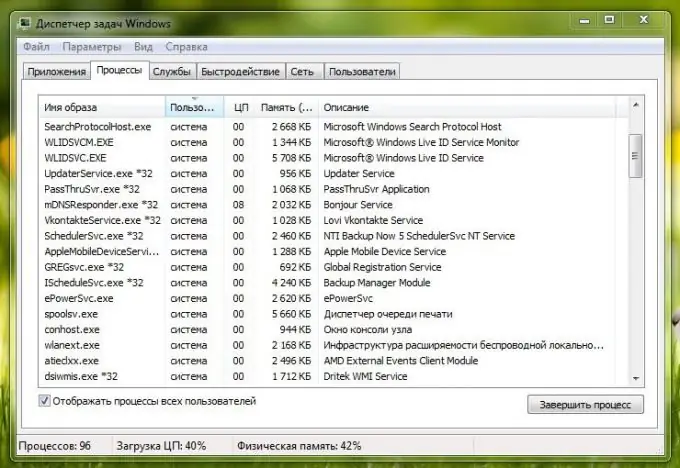Each application running on Windows that you use directly or that runs in the background has its own process, the cache of which is stored in RAM and processed by the computer's processor. The list of running processes can be found in the task manager.

Instructions
Step 1
The Task Manager has a user interface and is a service utility. It can be called by pressing the key combination “Ctrl” + “Alt” + “Delete” or by right-clicking on the main Windows taskbar and selecting “Start Task Manager” in the context menu that appears.
Step 2
The Windows Task Manager application appears on the screen. In the "Processes" tab, you will be able to observe all the processes launched by a given computer user. To see the processes of other accounts, as well as hidden processes, click the "Show processes of all users" button at the bottom of the window. Just below the process table, there are totals. Here you can see the number of running processes, CPU utilization and physical memory.
Step 3
Each process, in addition to the name, has a user, the level of CPU utilization in percent, the level of RAM utilization in kilobytes or megabytes, as well as a brief description of the process itself. To end the process, right-click on it and in the "End Process" list. Here you can change the priority of processes. To understand which application a particular process belongs to, select Properties from the context menu of the process.
Step 4
Conversely, if you want to terminate any program from the task manager, but do not know the name of its process, go to the "Applications" tab, right-click on the running application to display the context menu and select "Go to process" … The application will automatically move you to the Processes tab and highlight the running exe file of the required application, which you can terminate.






